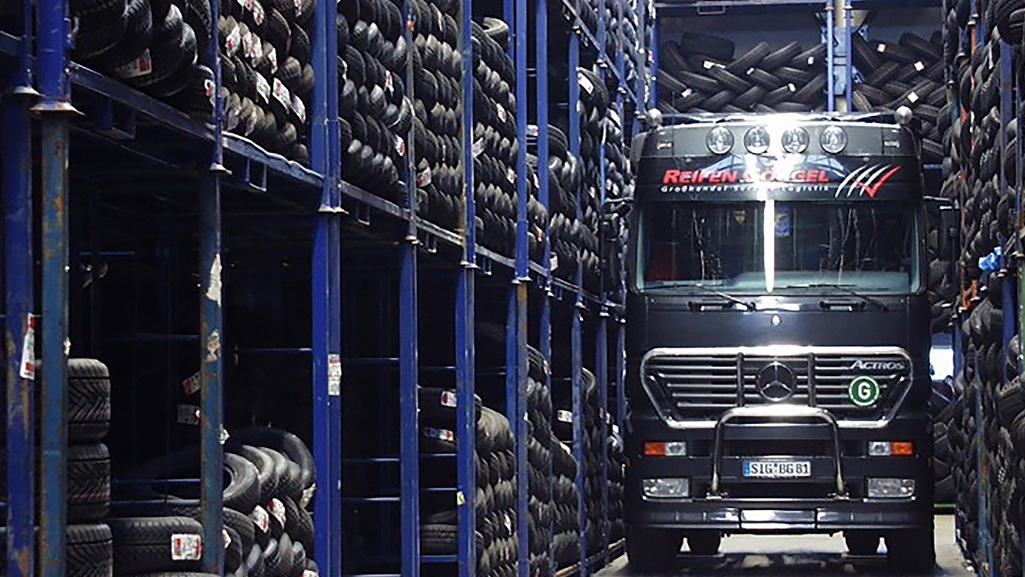The world has become more globalized in the last 40 years – not only in terms of travel destinations, but also in terms of cargo transports: Statista compares the development of international freight volume by transport modes. In total, after approximately 6,388 billion ton kilometers in 2010, nearly 31,000 billion ton kilometers are anticipated in 2050. An inconceivably high number of international transports, which are carried out by a wide range of companies. How do wholesalers deal with this difficult situation?
Challenge of international transports
The challenges with which a company that delivers around the world is confronted are many and varied. The trick is to control existing depots and branch offices and different systems, to plan different transport modes, and heed local restrictions, specifications, toll costs, customs duties, CO2 emissions and time slots.
Central solutions that cover all planning tasks for all depots have proven themselves. Given the fact that one computer center can roll out all services worldwide, route planning solutions that can be connected via API are a good solution. These are also available as cloud-based browser solution. If only individual logistical and geographical functions are to be added to the existing system landscapes, integrated Integrated logistics features are also suitable as a service. For in the end, a company gains if the branch offices do not have to worry about software acquisition.
International equals intermodal
International transports are generally carried out using different modes of transport, so they are referred to as intermodal or multimodal. Today, intermodal transport is characterized by digitalization. It becomes the driver of visibility for intermodal services, for increasing efficiency, reducing transport costs, and for modal transport generally. State-of-the-art software such as the PTV Route Optimizer or the PTV Developer Components pave the way toward intermodality.
Consolidated and distributed transport in wholesale
For its numerous national and international transports, however, wholesale initially takes a different approach: When planning its transports, wholesale has to tend not just to cross-border routes, but also to consolidated and distributed transports. They have to cope with the consolidation and distribution of goods in a congested metropolitan area (i.e. intra-city distribution transports) or around a congested metropolitan area (i.e. local distribution transports). This is done starting from a consolidation warehouse before or after a long-distance transport. Accordingly, distribution transports are triggered mainly by the consumption of people who live in the congested metropolitan area.
Challenges for depot-based planning
According to studies, the distribution transport industry is confronted with several challenges: The transformation to a service economy, which results in a higher number of deliveries; the growth of small online purchases; and increased demands with regard to the freshness of the products delivered. Last but not least, this is why manufacturers such as MAN are focusing, among other things, on vehicles that are suited for intra-city distribution transports around the world.
Empties and returns also play a major role here. The rise in online sales is responsible for the boom in courier, express and parcel services for the transport of general cargo with a relatively low weight and volume.
Modern route planning in different stages
For combined transports and groupage transports that are not handled directly, the supply chain is divided into pre-carriage, carriage and on-carriage: several stages, known as legs. In the first leg, the goods are collected from the production plants or the central hubs at the first transshipment point. In the second leg, scheduled services usually call at the depots or hubs or the next transshipment points. The last leg is the so-called “last mile”: the final journey to the customer.
This means that not only routes to and from the distribution plants are planned, but also depot-related planning and optimization. In addition, partial or complete load transports can be planned so that idle kilometers are minimized. A data center can thus provide service around the world: in any country with country-specific restrictions and time slots. Such solutions can also be implemented as SAAS solutions in computer centers.
International transports in dynamic tire wholesaling
A sharply seasonal business and the required great flexibility for internationally oriented transportation are the basic conditions for Reifen Göggel. This tire wholesaler keeps approximately 1.5 million tires in its central warehouse in the Swabian Alb, Germany, and delivers from there to customers all across Germany and in Austria, Switzerland, Italy, BeNeLux, France, and other countries.
“Our claim to deliver even internationally within 24 hours is a special challenge. For here, in addition to vehicle restrictions, local regulations have to be considered. Furthermore, depending on the route, there are toll costs that have to be included in the calculation, says Daniel Bravo, IT Manager at Reifen Göggel. That’s why manual route planning is long since a thing of the past. Today, the company relies on professional route planning software that is also connected to a telematics system. This allows planners to control the fleet as well as consolidation and distribution transports precisely and dynamically – even if there are numerous customer-specific orders.

Hello Ira! Thanks for sharing such useful information about international transport. Some people don’t know about the challenges of international transport, because different routes and different country rules create some policy issues.
You are welcome. And yes, the issue is much broader. It is a major political challenge to simplify and pave global transport routes.